This winter began in the most unusual way imaginable. I literally traveled through the galaxy and peacefully came back to Georgia. I’d love to share my unforgettable experience with you, dear HIVE @Worldmappin community, and thus join the #Winterchallenge.
As long as I can remember, I have dreamed of getting closer to the galaxy’s objects, planets, and stars. My usual end-of-year reflections reminded me of this dream and led to a very spontaneous decision—to visit the observatory located in the high Georgian mountains and finally make my childhood dream come true.
The observatory is located in Abastumani, a Georgian mountain resort about 250 km from the capital, Tbilisi, making it a great option for a weekend getaway.
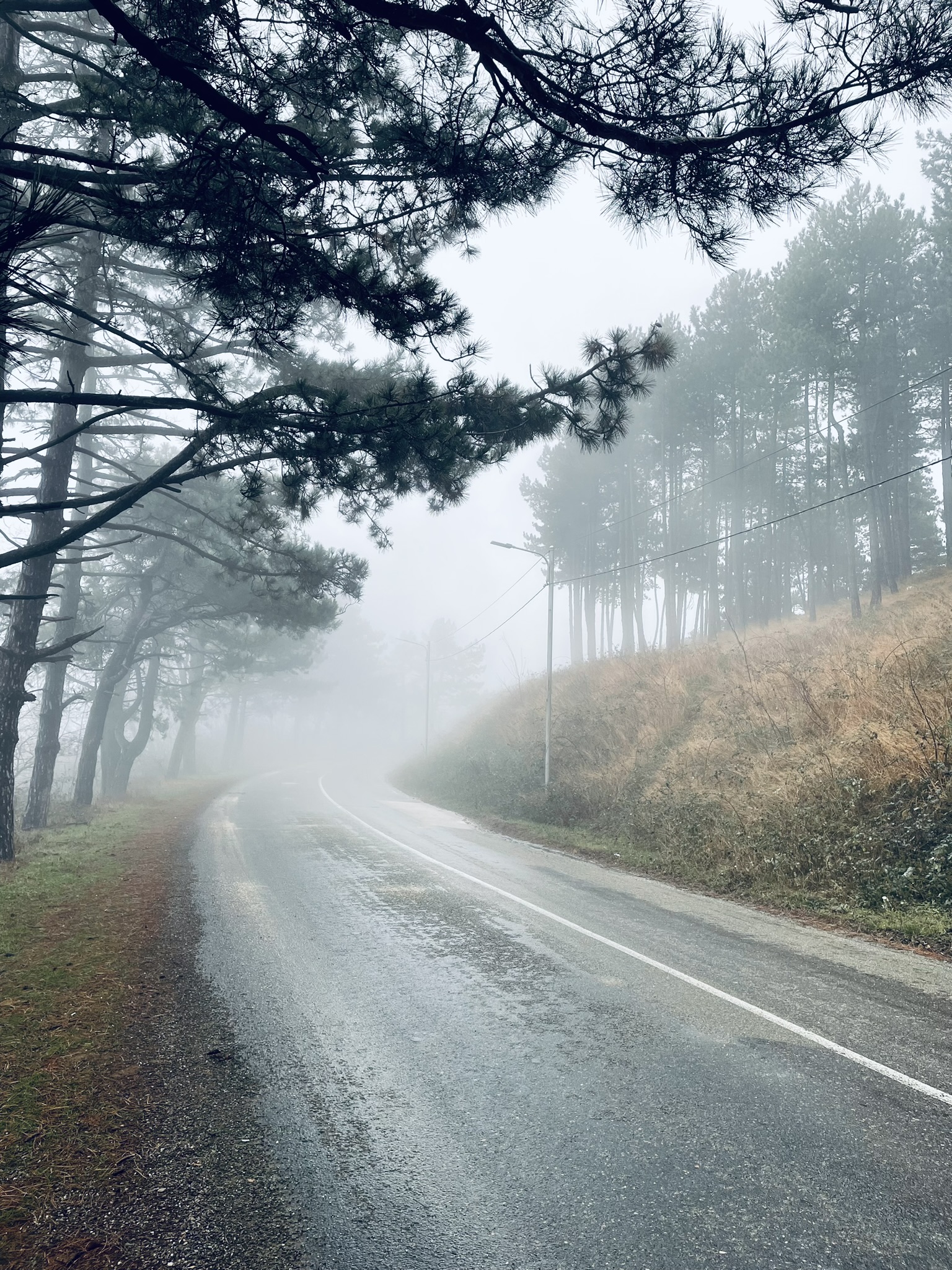
Daytime Astrotour
The road was magical—slowly transitioning from sunny late autumn in Tbilisi to a foggy winter forest, and finally, we met our very first snow of the year!
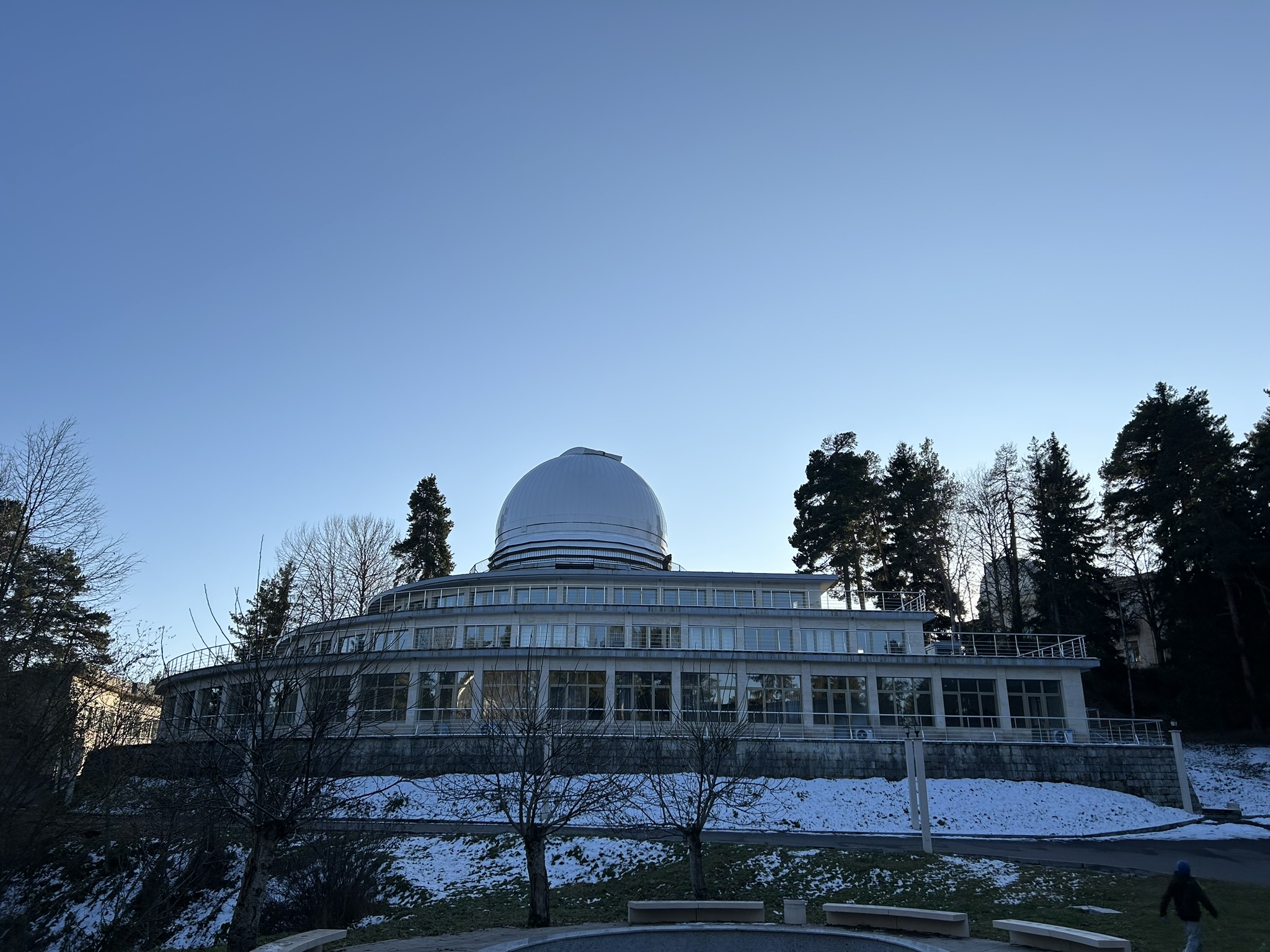 The observatory complex, situated at an altitude of 1650 meters above sea level, welcomed us with its fascinating history. As our guide explained, the observatory was founded in 1932, making it the first high-mountain astrophysical observatory in the USSR (Georgia was part of it back then). The location was chosen for its ideal conditions—far from air pollution and artificial sky illumination, with a stable climate offering many clear-sky days throughout the year.
The observatory complex, situated at an altitude of 1650 meters above sea level, welcomed us with its fascinating history. As our guide explained, the observatory was founded in 1932, making it the first high-mountain astrophysical observatory in the USSR (Georgia was part of it back then). The location was chosen for its ideal conditions—far from air pollution and artificial sky illumination, with a stable climate offering many clear-sky days throughout the year.
The daytime tour included a brief introduction to the observatory and its quite big territory, which features over 10 different domes with telescopes. We then entered the observatory dome with one of the oldest operational telescopes. 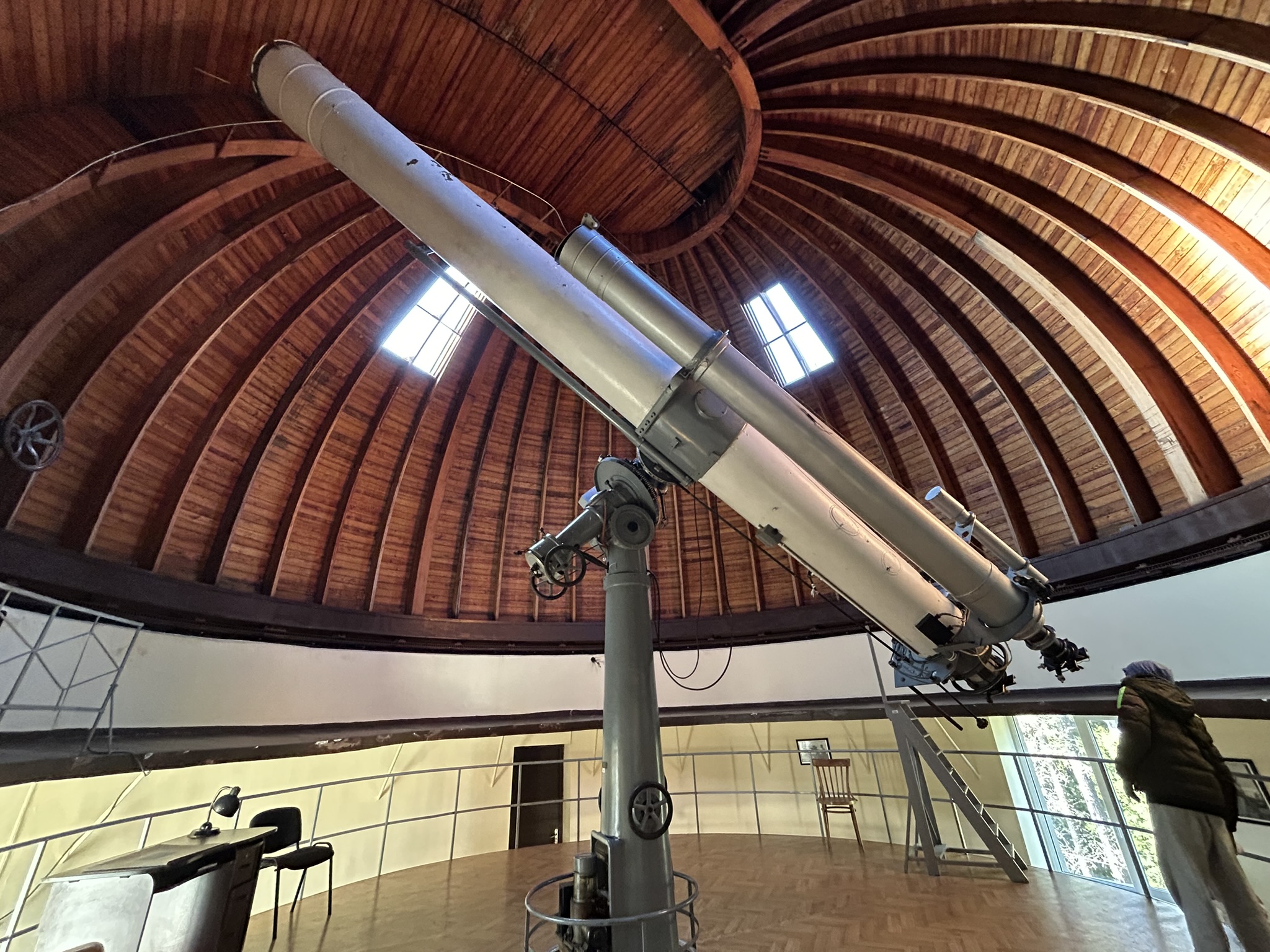 Although we couldn’t observe anything through the telescope during the day, the guide demonstrated how the dome functions. He opened the dome above our heads, rotated it, and even moved the floor beneath us up and down. We were in admiration, feeling like tiny beings inside a colossal cosmic machine or like Gulliver in the Land of Giants.
Although we couldn’t observe anything through the telescope during the day, the guide demonstrated how the dome functions. He opened the dome above our heads, rotated it, and even moved the floor beneath us up and down. We were in admiration, feeling like tiny beings inside a colossal cosmic machine or like Gulliver in the Land of Giants. 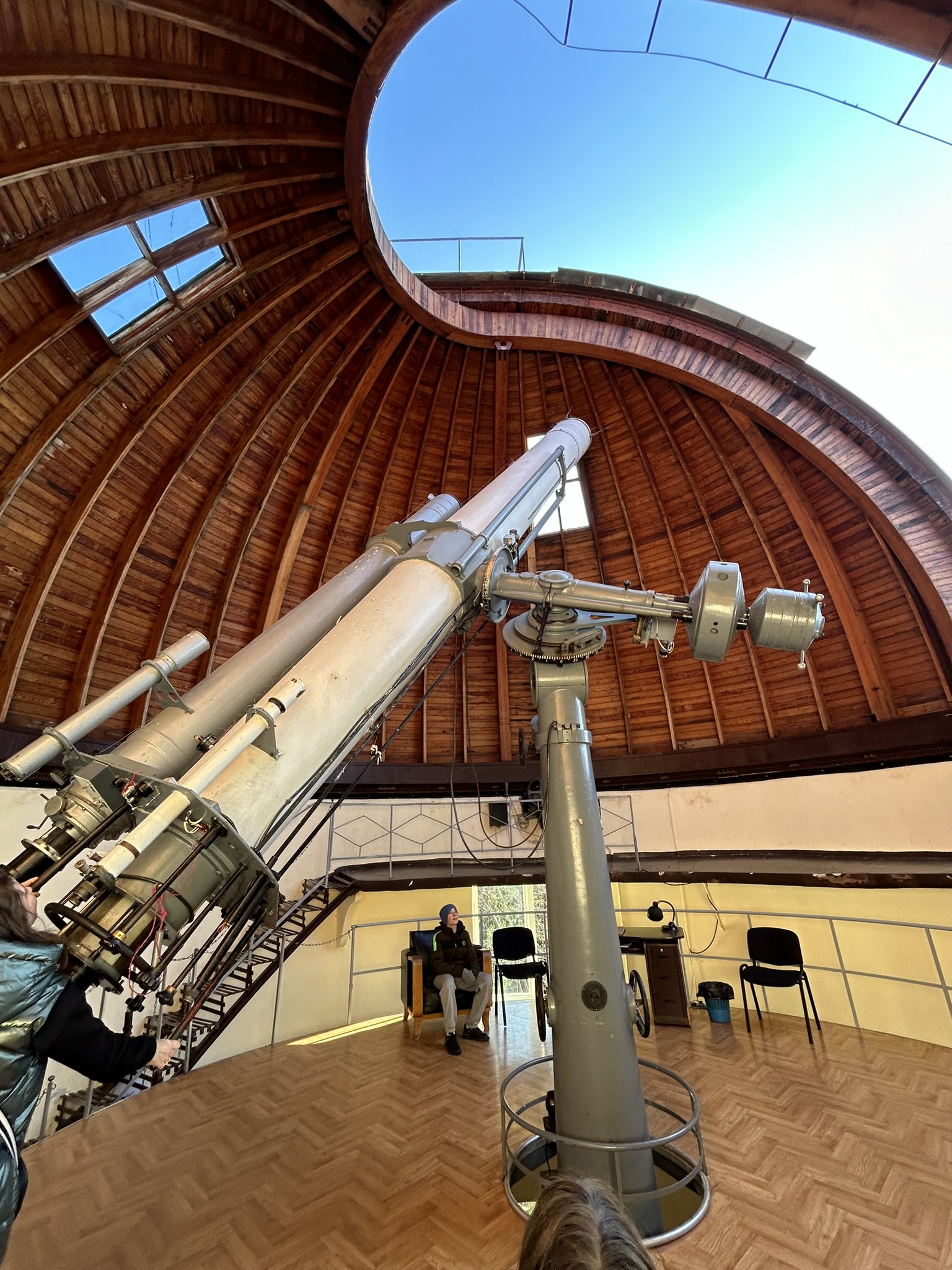 Afterward, the guide gave a fascinating presentation about our galaxy, which captivated both the adults and our kids. We also visited a small museum showcasing intriguing artifacts—from a solar system simulator to pieces of asteroids found in the area. I was particularly amazed by the asteroid. Just imagine the immense distance those “pieces of stone” traveled before landing on our Earth!
Afterward, the guide gave a fascinating presentation about our galaxy, which captivated both the adults and our kids. We also visited a small museum showcasing intriguing artifacts—from a solar system simulator to pieces of asteroids found in the area. I was particularly amazed by the asteroid. Just imagine the immense distance those “pieces of stone” traveled before landing on our Earth!
Nighttime Astrotour
The most awaited part of our visit was, of course, the nighttime tour, available between 8 p.m. and 1 a.m. in late autumn and December. Returning to the observatory after dark, it felt completely transformed—mysterious and almost magical. 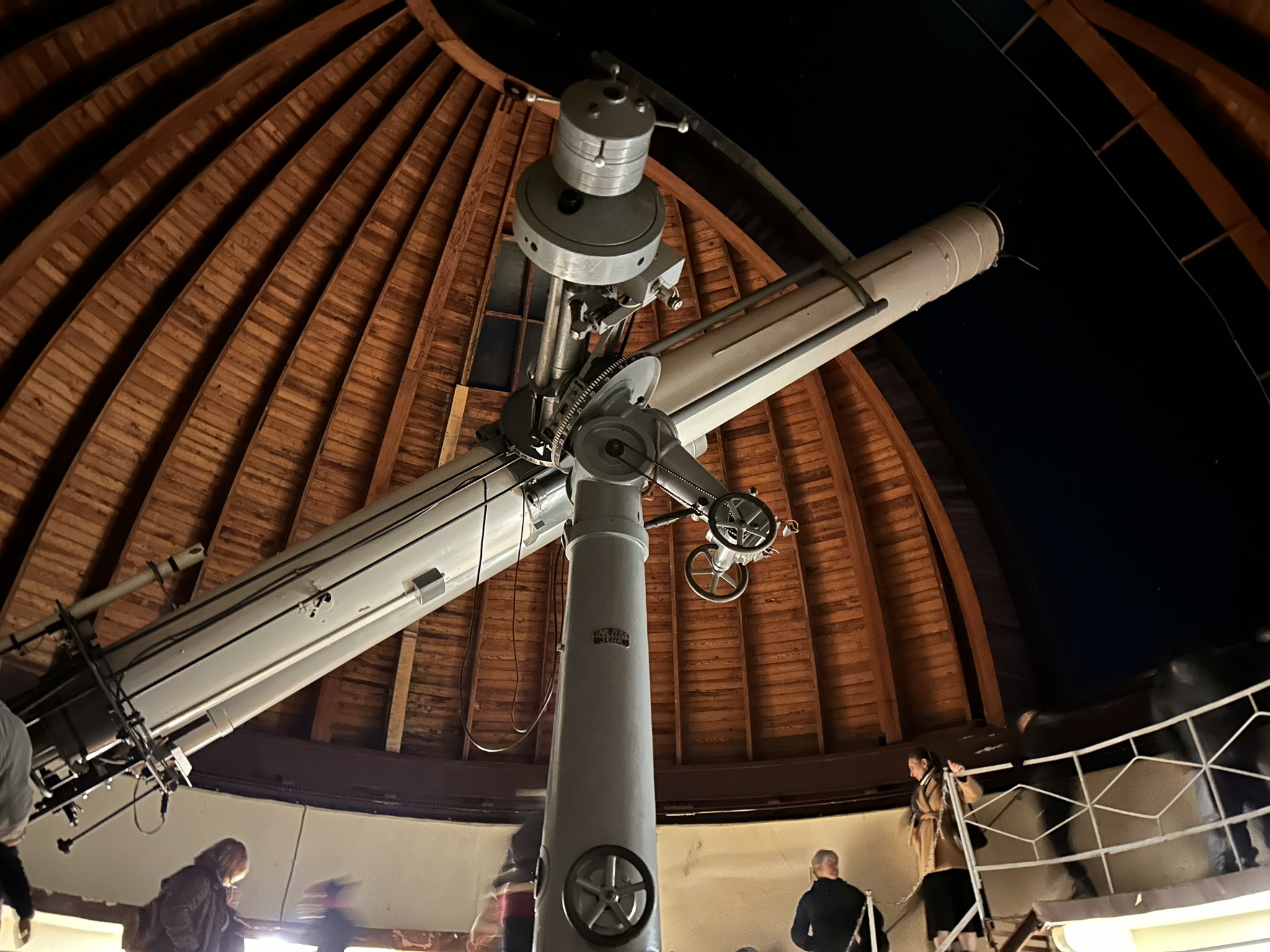 And the moment when the dome was opened and we saw clear sky full of stars above our heads was absolutely fantastic! The guide adjusted the telescope and announced that our astrotour would begin with observing… Saturn!
And the moment when the dome was opened and we saw clear sky full of stars above our heads was absolutely fantastic! The guide adjusted the telescope and announced that our astrotour would begin with observing… Saturn! 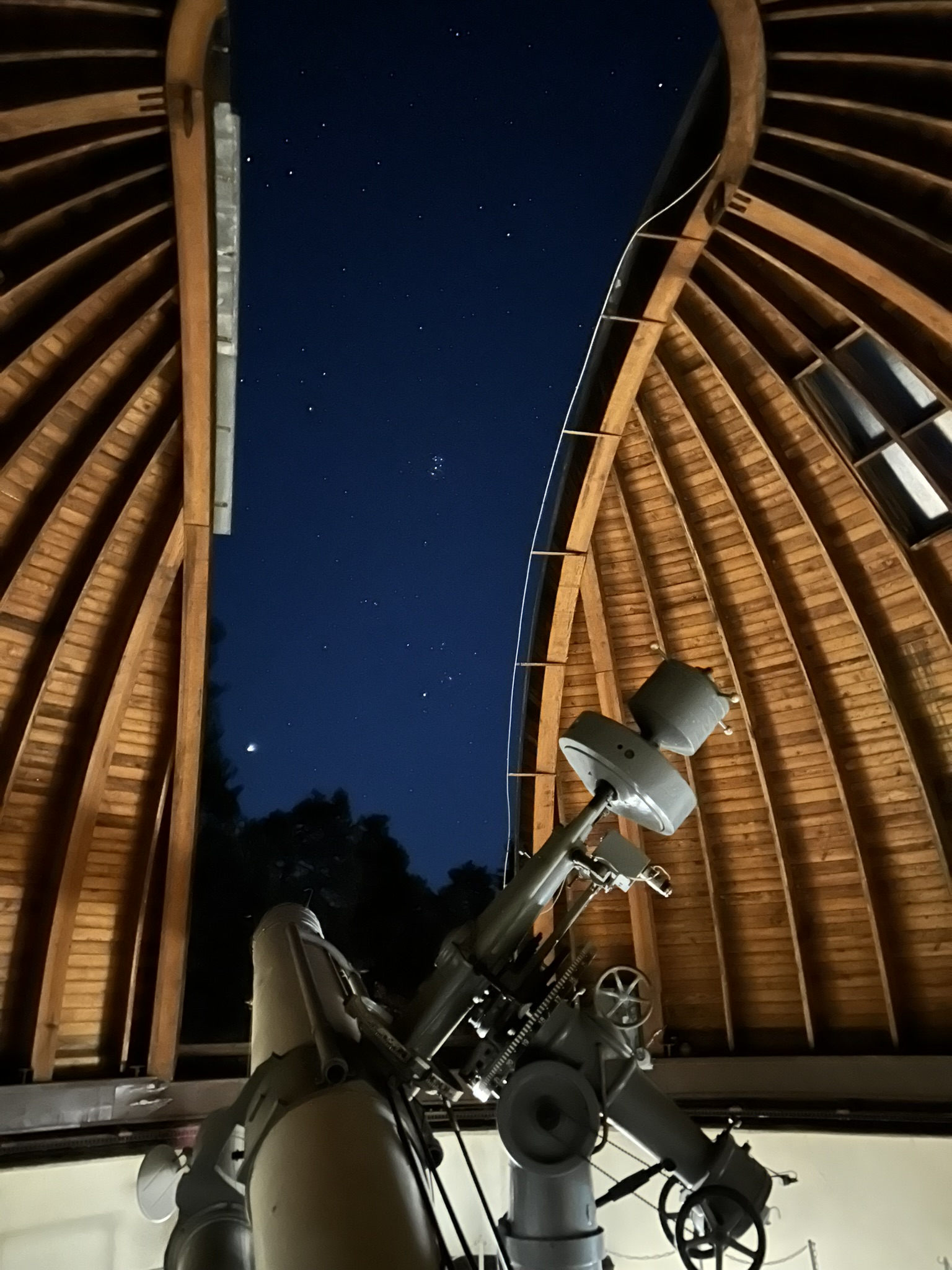 Holding my breath, I approached the telescope’s central lens. In an instant, I found myself in another world. There it was—Saturn, with its iconic ring around clearly visible!
Holding my breath, I approached the telescope’s central lens. In an instant, I found myself in another world. There it was—Saturn, with its iconic ring around clearly visible! 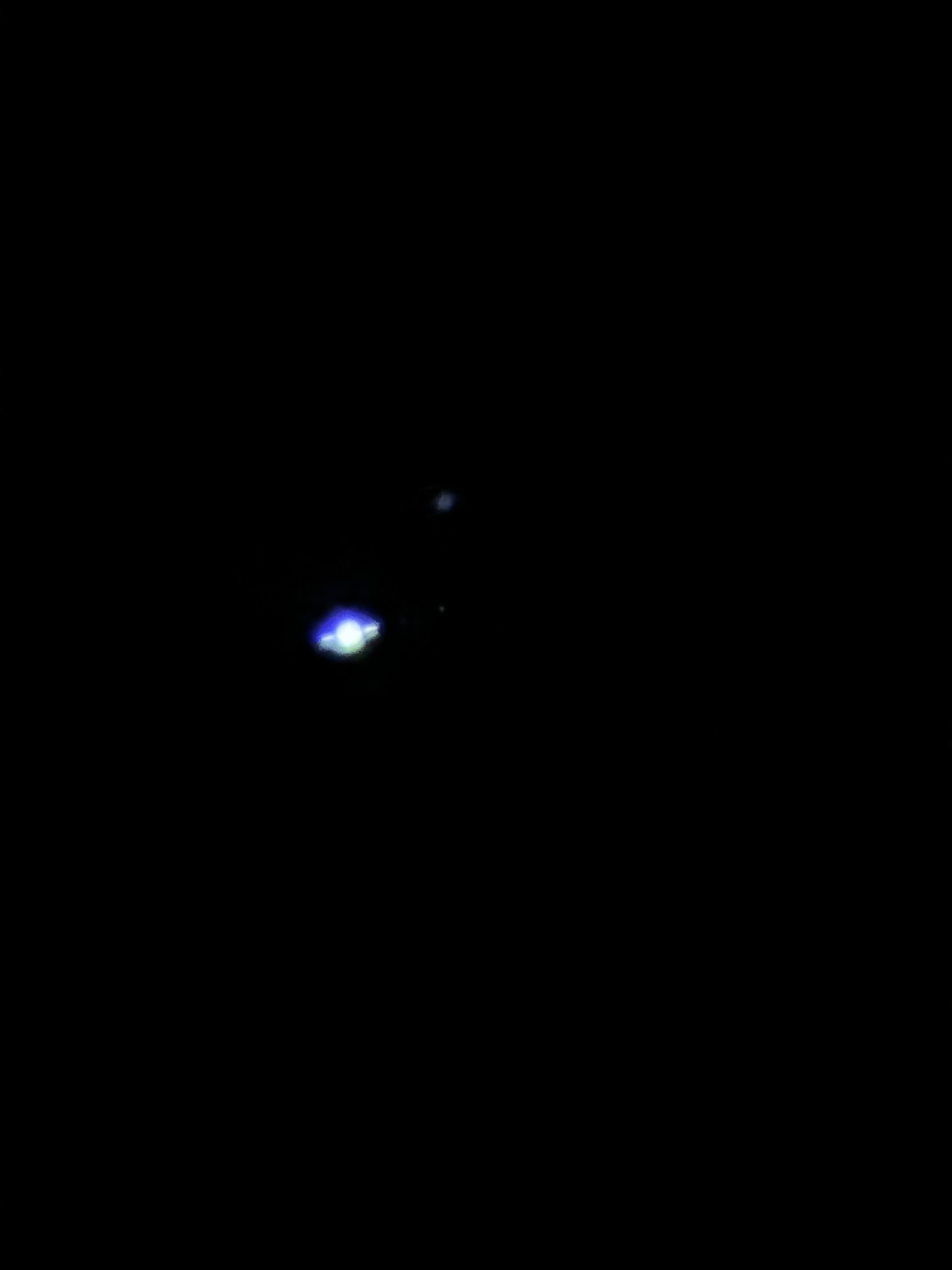 We all know what Saturn looks like from numerous pictures we’ve seen in school, but seeing the real planet at the real time through a telescope lens is an indescribable experience. Here you are – a little human standing with your feet on Earth looking at Saturn which is around 1660 mln km away from you, located somewhere in the galaxy … too crazy to be real, too fantastic to be the truth but it is both truth and reality.
We all know what Saturn looks like from numerous pictures we’ve seen in school, but seeing the real planet at the real time through a telescope lens is an indescribable experience. Here you are – a little human standing with your feet on Earth looking at Saturn which is around 1660 mln km away from you, located somewhere in the galaxy … too crazy to be real, too fantastic to be the truth but it is both truth and reality.
“One small step for man, one giant leap for mankind”
Our next ‘big meeting’ was meeting with the Moon. ! Doesn’t matter how many times you’ve seen the map of the moon or the videos how Neil Armstrong does his first step to the moon, the impression of observing the real moon via telescope would be magnificently more impressive! It appeared much larger and closer than Saturn, allowing us to see its craters and seas in stunning detail. Through three different lenses, the Moon’s surface looked differently, making it nearly impossible to stop admiring it. 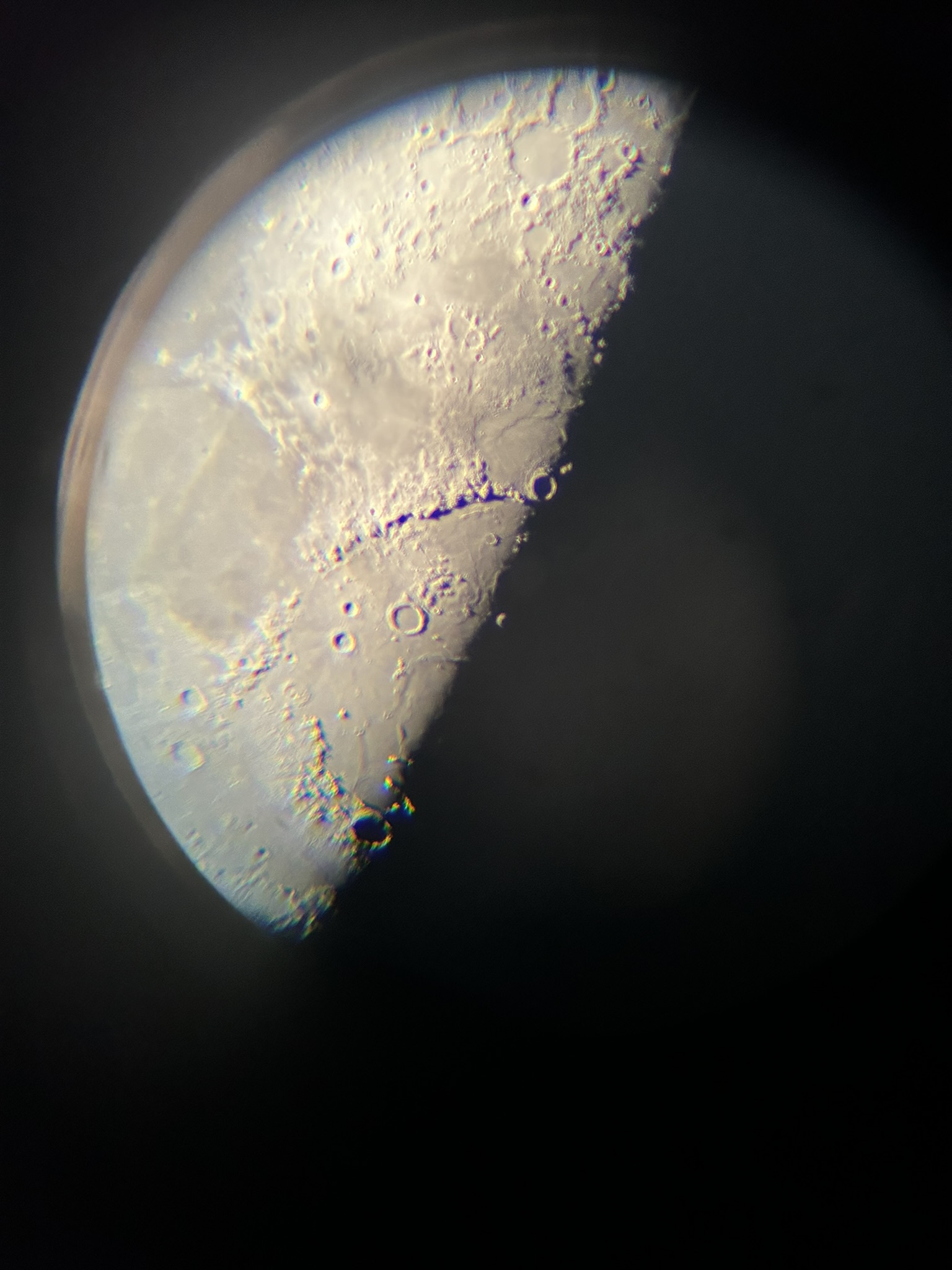 But our cosmic journey wasn’t over.
But our cosmic journey wasn’t over. 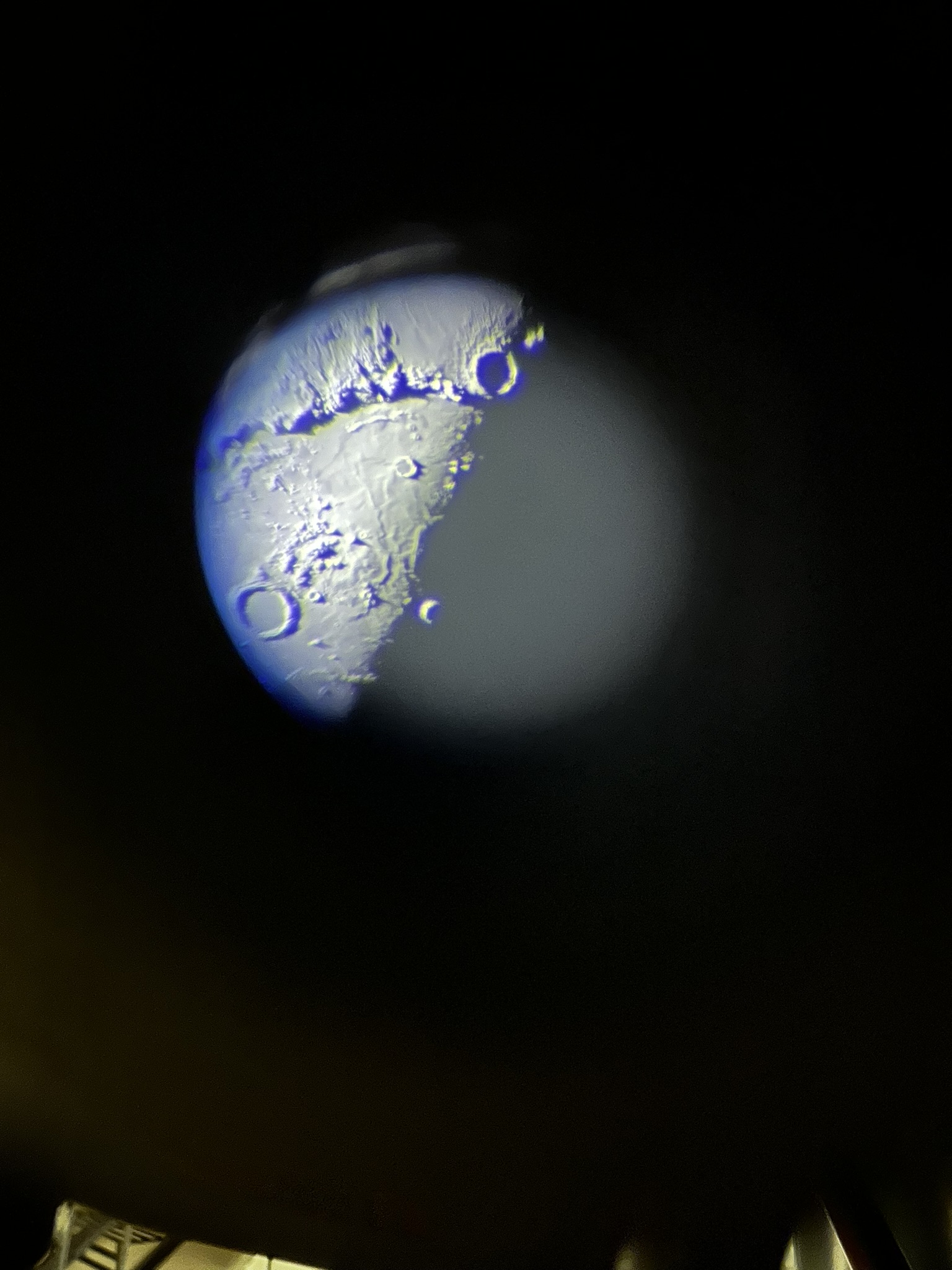 Next, we turned the telescope toward Jupiter. Expecting a glowing ball resembling a large star, we were once again astonished. Through the lens, we saw Jupiter’s famous stripes, surrounded with its largest moons—Io, Europa, Ganymede, and Callisto. Witnessing this celestial marvel felt like another giant leap across the galaxy.
Next, we turned the telescope toward Jupiter. Expecting a glowing ball resembling a large star, we were once again astonished. Through the lens, we saw Jupiter’s famous stripes, surrounded with its largest moons—Io, Europa, Ganymede, and Callisto. Witnessing this celestial marvel felt like another giant leap across the galaxy. 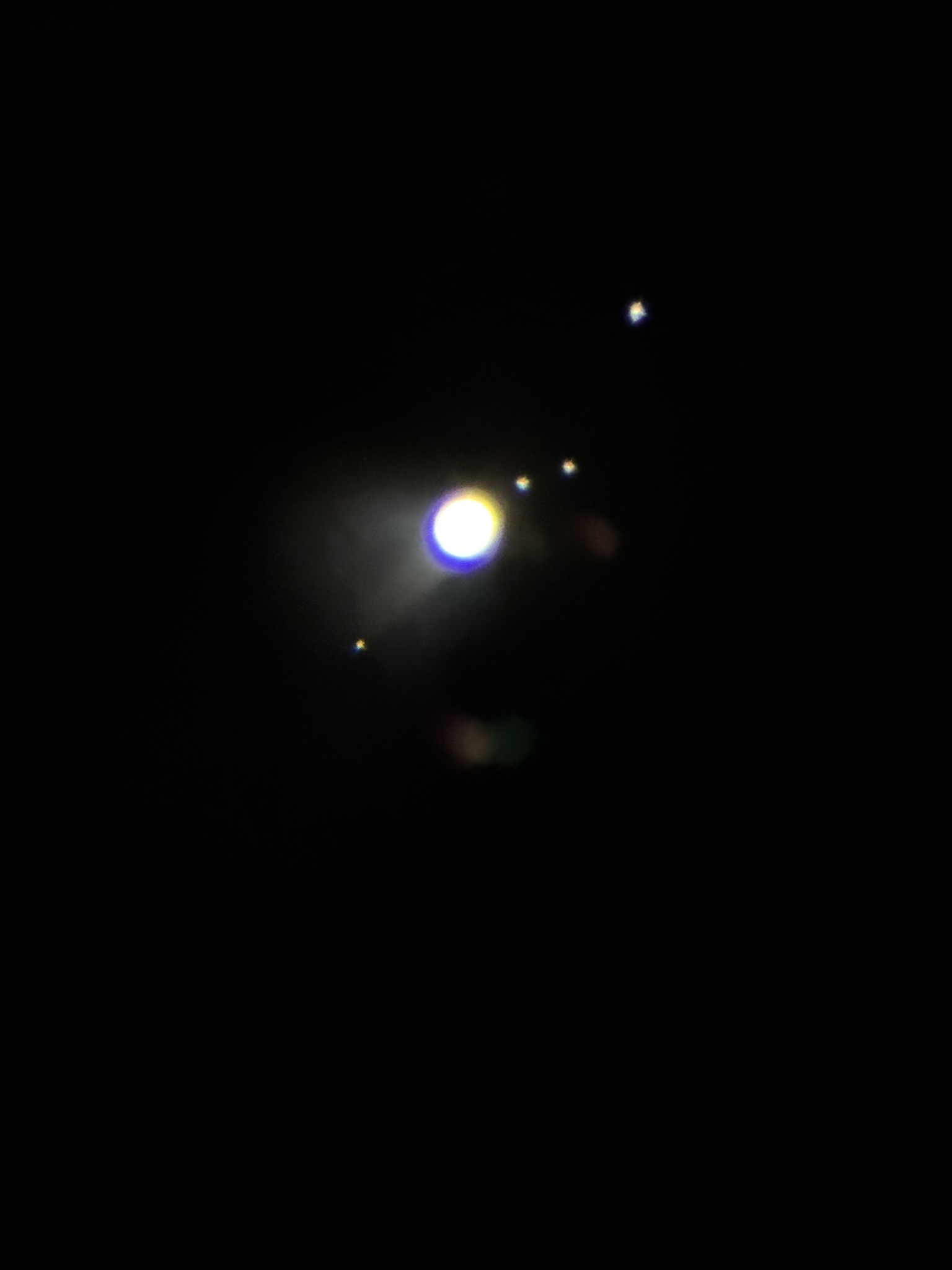
Memories to Take Away
This visit to the observatory and our journey across the galaxy was just one of many travels this year, but without a doubt, it was the most memorable.
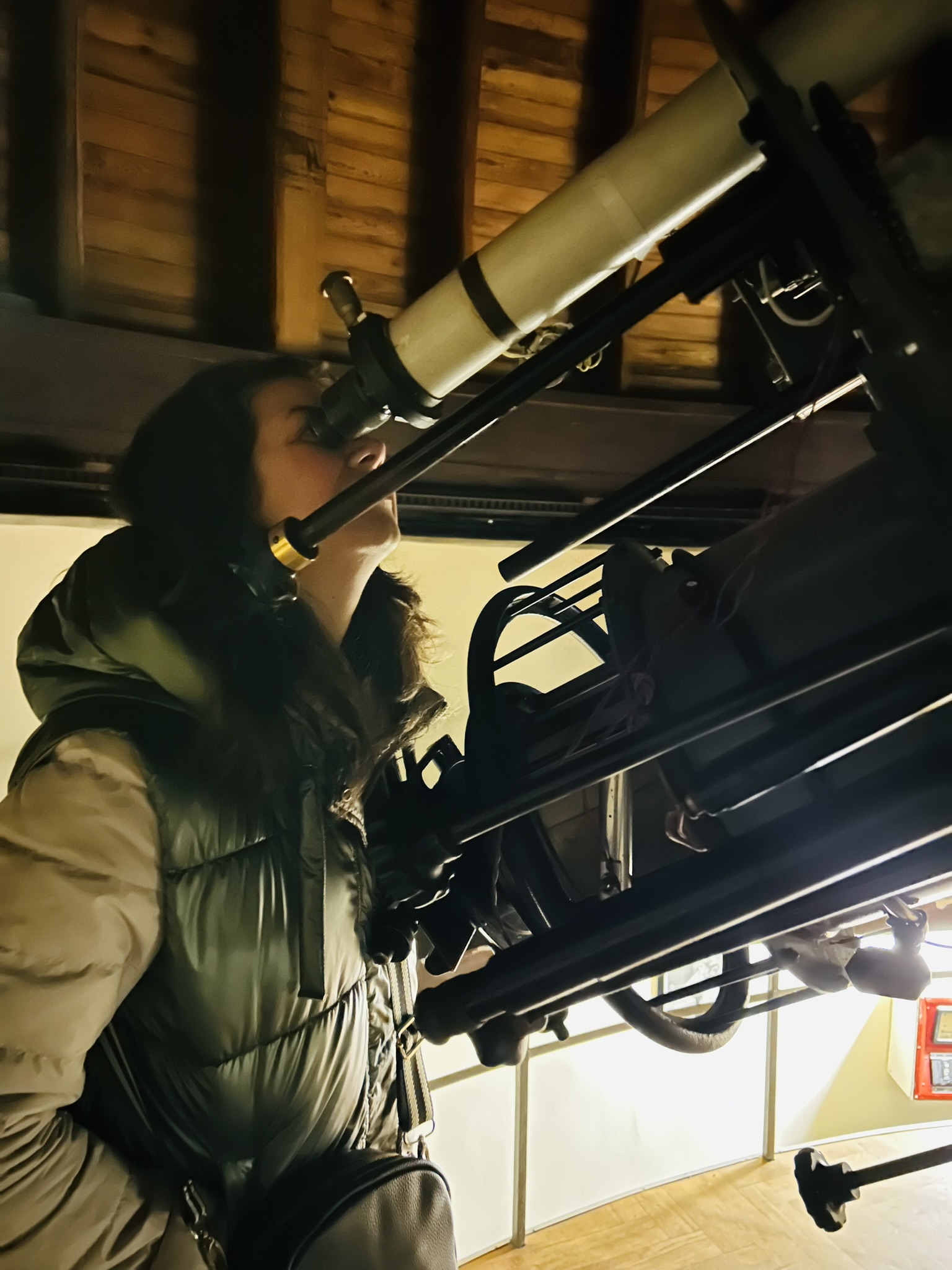 As Gustave Flaubert famously said, “Travel makes one modest. You see what a tiny place you occupy in the world.” To this, I would add that traveling across space (even through a telescope lens) and observing the wonders of our galaxy reminds us how incredibly small we are—and yet, how privileged we are to be part of something so vast and mysterious.
As Gustave Flaubert famously said, “Travel makes one modest. You see what a tiny place you occupy in the world.” To this, I would add that traveling across space (even through a telescope lens) and observing the wonders of our galaxy reminds us how incredibly small we are—and yet, how privileged we are to be part of something so vast and mysterious.
To everyone who has stopped by my blog: I wish you a wonderful year ahead filled with incredible travels around the world and beyond. May your wildest dreams come true in 2025!











You can check out this post and your own profile on the map. Be part of the Worldmappin Community and join our Discord Channel to get in touch with other travelers, ask questions or just be updated on our latest features.
Congratulations @annasworld! You have completed the following achievement on the Hive blockchain And have been rewarded with New badge(s)
Your next target is to reach 2750 upvotes.
You can view your badges on your board and compare yourself to others in the Ranking
If you no longer want to receive notifications, reply to this comment with the word
STOPCheck out our last posts:
I was just minutes ago looking at that same location on Google Maps while planning my next trip around Georgia! I had no idea it was active to that degree. Now it's quite a tempting choice.
it is a great option for a weekend trip from Tbilisi! We united it with visiting Rabat fortress and with that it was a wonderful weekend - one day dedicated to Observatory and one day for Rabat/Akhaltsikhe, hope you will enjoy the trip to that area too!